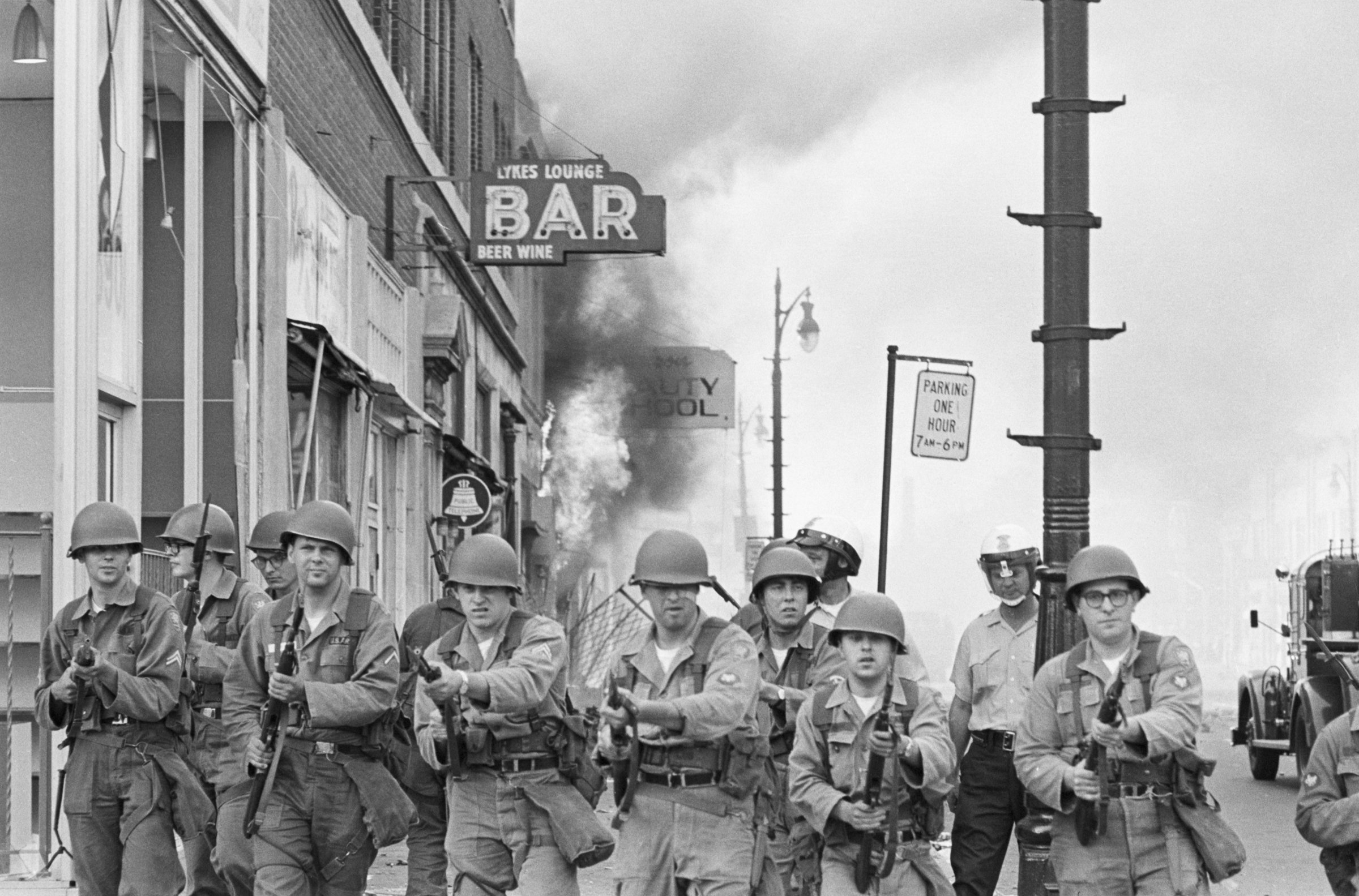
Any movie based on a true story will take certain liberties, and Kathryn Bigelow’s examination of the events of the 1967 riot in Detroit—Detroit, out Friday—acknowledges that some of the precise details of those events aren’t even certain to those who deal strictly in nonfiction. But at least one moment in the film, its subject says, is “a fair representation of what I did and said.”
That subject is Rep. John Conyers Jr., who represented Detroit in the House of Representatives in 1967 and still does today, as the most senior member in that legislative body and the first African-American representative to hold that honor.
And the moment in question is one of which TIME likewise took note, in its cover story about the events:
When the riot was only a few hours old, John Conyers, one of Detroit‘s two Negro Congressmen, drove up Twelfth Street with Hubert Locke and Deputy School Superintendent Arthur Johnson. “Stay cool, we’re with you!” Conyers shouted to the crowd. “Uncle Tom!” they shouted back. Someone heaved a bottle and the leaders beat a prompt retreat, not wanting to become “handkerchief heads” in the bandaged sense of the epithet. “You try to talk to these people,” said Conyers unhappily, “and they’ll knock you into the middle of next year.”
Looking back on that time from the vantage point of today, Conyers says, it can be hard to grasp what Detroit was like, the way that “segregation was a fact of life” and how much more tense things were than they are even today. And, as a result, despite the difficulty he experienced talking the crowd that day, he takes an empathetic view of those who shouted him down.
“This was a moment where rage and rebellion and anger and opposition to the mistreatment of people because of their race all erupted in one of those unusual and important moments. It couldn’t be stopped. I couldn’t stop it at all,” he tells TIME. “[Calming down] was an important step but I think it was a step that we couldn’t accomplish because of the explosion of emotions and the pent-up feelings of being less than first-class citizens. It’s hard to imagine how much separation of people there was in and around Detroit because of a person’s racial background.”
Though he says he didn’t know all of the people in the crowd personally, he was familiar with many of them and they with him. He was also intimately familiar—as he would tell reporters in the immediate wake of the riot—with the frustration and impatience that lay underneath the tensions in the city. The spirit of “we’re not going to take it any longer” took over, he says, and the inequality that was no longer supportable could be traced not just to Detroit’s recent history but all the way back to slavery. The relationship between the city’s African-American population and its law enforcement was a key point for the expression of that history, and he says that the police played “a large role” in creating a situation in which those constituents could no longer be persuaded that violence was not the only recourse left.
“There were very few African-Americans on the police force of Detroit and it was certainly way [before] the time when we would have an African-American chief of police in the city of Detroit, and the police were more than impolite,” he says. “They were rough. They ordered people around. They had what they called a ‘Big Four’ cruiser, in which police drove around, usually threatening young people who were just hanging out on the corners or on the streets with not too much to do. They weren’t a menace but they were the ones who were available. The absence of sensitized police relations played a huge role in fomenting this pent-up resentment against law enforcement.”
Though he couldn’t stop the riots, Conyers recalls that his first priority was telling people to stay off the streets for their own safety, as the longer the disturbance went on the more people would be hurt or killed. (The death toll by the end of the five-day riot would be 43.) He also recalls receiving a phone call from President Lyndon Johnson, who wanted to know whether the reports he was receiving were accurate. Conyers told him that yes, he was in Detroit and he could promise that the news that was reaching Johnson really did reflect how bad the situation was on the ground.
“The sound of tanks, United States Army tanks, going down, say, Dexter Avenue in Northwest Detroit, just made a horrible sound,” he says. “It rattled everything.”
In the wake of that horror, however, he saw hope.
Organizations like New Detroit were founded to work on desegregation and other solutions, and these days the Detroit police force is majority-black and, despite a rough road getting there, Conyers says he believes that organizations that are dedicated to working on improving racial justice in his city have made a difference.
“We haven’t resolved all of the problems but I think we’ve got organizations now that are sensitized,” Conyers says. “This kind of thing is something in our history, but I don’t really expect that it would happen again.”
More Must-Reads from TIME
- Inside Elon Musk’s War on Washington
- Meet the 2025 Women of the Year
- Why Do More Young Adults Have Cancer?
- Colman Domingo Leads With Radical Love
- 11 New Books to Read in Februar
- How to Get Better at Doing Things Alone
- Cecily Strong on Goober the Clown
- Column: The Rise of America’s Broligarchy
Write to Lily Rothman at lily.rothman@time.com